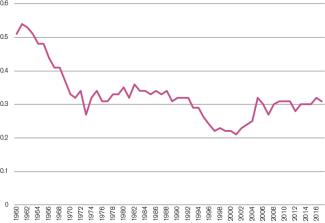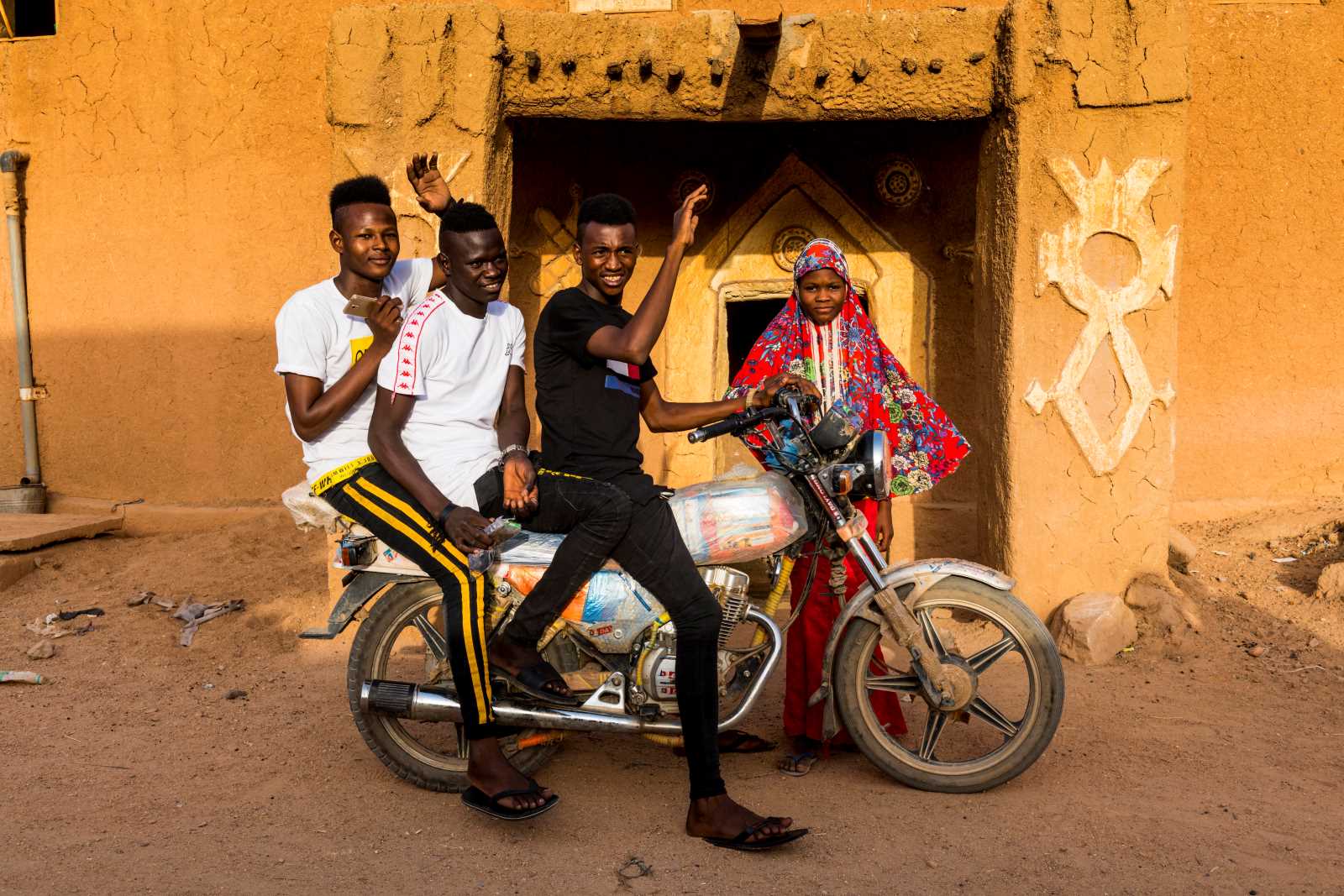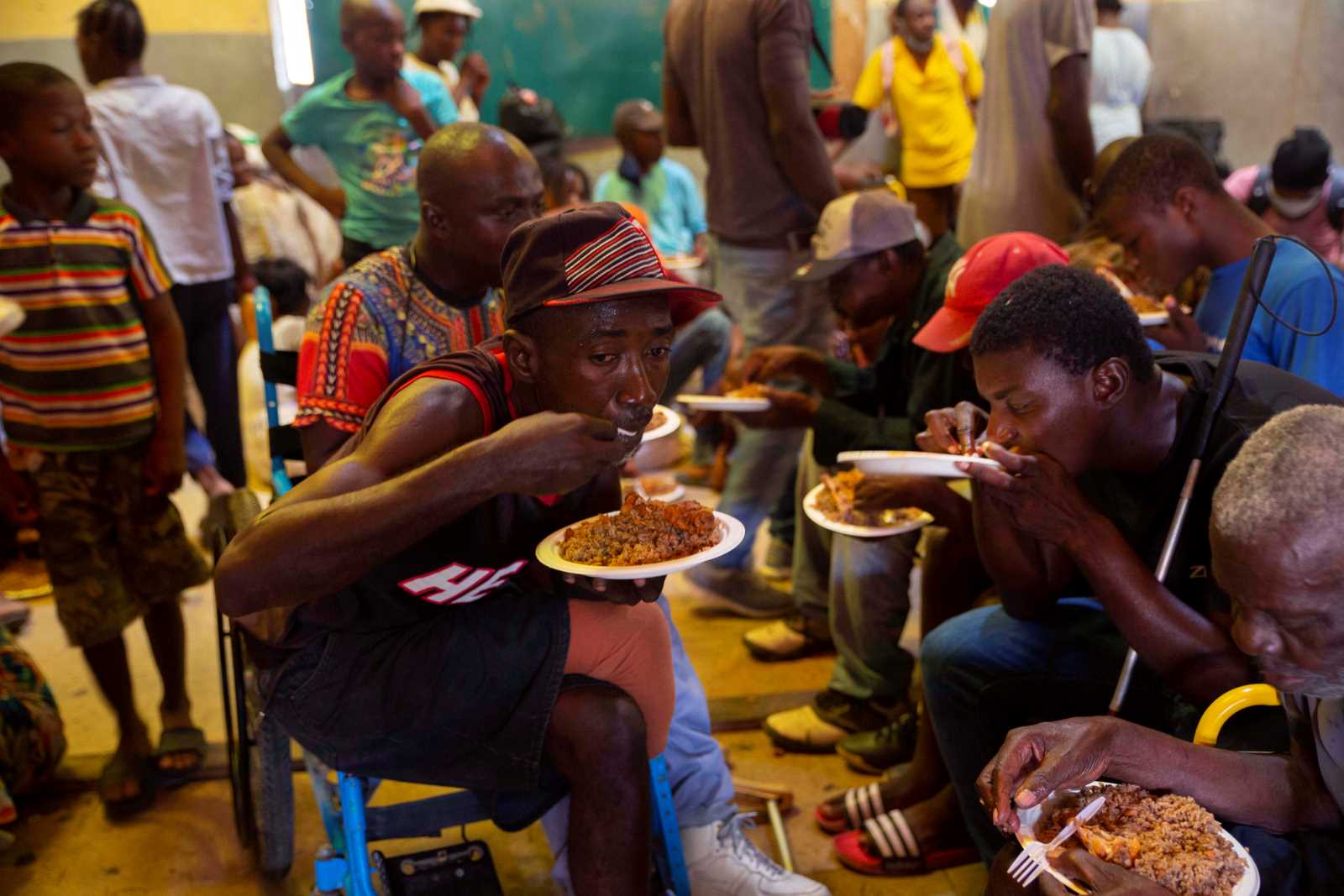Multilateral agenda
Unprecedented – but underfunded

The SDGs are the international communities’ response to urgent challenges. Among other things, they are designed to:
- ensure economies growth and poverty alleviation,
- bring about mitigation of, and adaptation to, climate change,
- reduce inequality, including gender disparities,
- safeguard peace and
- foster international cooperation.
The principle is to leave no one behind. The agenda is truly global. The 17 goals and 169 targets are expected to be delivered by all countries, despite their different levels of socio-economic development. The starting points are indeed very different. More than half of Africa’s 54 nations are low-income countries. These countries have very low baselines. Fragile statehood adds to the problems in many places. The aspiration, nonetheless, is to achieve the SDGs everywhere.
The challenges are huge. They range from fundamental livelihood issues such as poverty, basic health and education services, to unemployment and inequalities to stemming global trends such as global warming and the loss of biodiversity. The plain truth is that most low-income countries are not in a position to rise to all relevant duties on their own. Typically, they struggle to tackle merely the most basic domestic challenges.
This is the backdrop of the Addis Ababa Action Agenda (AAAA), which was adopted by the UN conference on financing for development in Ethiopia’s capital city in July 2015. It resulted from a long diplomatic process that also led to the adoption of the SDGs later that year. The AAAA outlined the relevant sources of potential SDG finance. The most important strategic options are probably:
- to generate higher tax revenues in developing countries,
- to increase official development assistance (ODA) and
- to unleash private investments (both foreign and domestic).
The SDGs were preceded by the Millennium Development Goals (MDGs). Two essential lessons of the MDGs are that coordinated global efforts can indeed bring about progress, but that financing must not fall short of the need. Both happened in Africa. The achievements made were useful, but due to lack of funding, not all aspirations came true.
Higher ambitions than before
The current SDG agenda is more ambitious, than the MDG agenda was. Even more than before, implementation and acceleration depend on substantial financial flows from various stakeholders. The SDG Center for Africa (SDGC/A) has made the following estimates: low-income countries south of the Sahara need an additional annual $ 21 billion for education, an additional annual $ 20 billion for health care and an additional $ 12 billion for environmentally sound water supply.
It bears repetition that developed economies must increase ODA. Since the 1970s, they have not lived up to their promise of spending 0.7 % of gross national income on ODA. According to the Organisation for Economic Co-operation and Development (OECD), a club of high-income and almost-high-income countries, ODA only amounted to $ 147 billion or 0.31 % of 29 donor governments combined GNI in 2017. The shortfall was $ 185 billion.
Compounding the problems, ODA flows to Africa have not only been volatile in recent years. In view of fast population growth, they are actually dwindling per capita. The resources provided to low-income countries in the past 20 years were never commensurate with the depth and the urgency of the challenges. That must change, but more money will still be needed.
The outlook for improving developing countries’ tax revenues – which is called “domestic resource mobilisation” in the technical jargon – is not encouraging (see essay by Dereje Alemayehu in D+C/(E+Z e-Paper, Focus section). In more than a dozen African countries, according to SDGC/A assements, the ratio of tax to gross domestic product is still below 15 %, which is generally considered to be the minimum level needed for functional statehood. While the tax to GDP ratio actually rose to an average of 17.5 % in Africa in 2012, it decreased again to only about 16 % in 2017. Too many countries are below the average, and the unsatisfying truth is that tax revenues did not keep up with economic growth.
To deliver on the SDG agenda, the average additional spending needed in low-income countries represents 15 % of their GDP, according to an International Monetary Fund (IMF) staff paper of September 2018. Substantial investments are needed in education, health, water supply and sanitation, roads and electricity. Given that many of the countries concerned do not even generate 15 % as government revenues, the gaps are obviously huge.
At the same time, unemployment and underemployment remain serious problems. Commodity prices have been declining, moreover, which is bad news for the low-income economies that export these goods. In this setting, it is naïve to expect them to see dramatically increasing tax revenues. Instead, public debt is growing once again, and experts from the IMF and the World Bank have been warning of debt-stress risks for quite some time (see Jürgen Zattler in Focus section of D+C/E+Z e-Paper 2018-09).
In this context, the current multilateral policy framework in regard to macroeconomic stability is far too rigged. The focus is only on debt levels, regardless of what loans are used for. Internationally, interest rates are quite low and mitigating climate change must be considered more important than fending off inflation in the long run. Inflation is painful, but policymakers can get a grip on it, when and if it arises. Global warming is irreversible. The current financial-stability framework means that low-income countries’ cumulative debt is considered unsustainable once it exceeds a certain level. At that point, they are at risk of being cut off not only from loans, but even from grants. International financial institutions and the OECD countries should grant them more policy space.
Low-income countries’ own development banks are especially important in this context. To date, there are about 65 national and regional development banks in Africa. Some are owned by public and private shareholders, moreover. Generally speaking, they remain small and undercapitalised. They should be strengthened technically and financially in a way that empowers them to contribute to achieving the SDGs. Sustainability and inclusion must be high on their agenda.
Private capital must play its role as well. Making that happen is easier said than done. By definition, private investment is not steered by policymakers. The important thing is to set the right incentives. Rewarding financial investors in SDG-relevant projects with negative interest rates could mobilise private money, but public money is needed to pay for that kind of subsidy. Impact investments, which are geared to social and environmental results on top of merely financial ones, are needed. Relevant commitments have been growing, but more needs to happen.
It is worth noting that, almost four years after the SDGs were adopted, too little has been accomplished in terms of SDG finance. Next year, one third of the entire programme time will have passed. At the current pace, the vision will not become reality. Further slippage would be a guarantee of failure. Failure, however, is not an option humanity can afford.
Belay Begashaw is the Director General of the Sustainable Development Goals Center for Africa (SDGC/A) in Kigali, Rwanda.
bbegashaw@sdgcafrica.org
Links
International Monetary Fund (IMF), 2019: Fiscal policy and development: human, social, and physical investment for the SDGs.
https://www.imf.org/en/Publications/Staff-Discussion-Notes/Issues/2019/01/18/Fiscal-Policy-and-Development-Human-Social-and-Physical-Investments-for-the-SDGs-46444
SDG Center for Africa (SDGC/A), 2019: Sustainable Development Goals three year reality check.
https://sdgcafrica.org/wp-content/uploads/2019/06/AFRICA-2030-SDGs-THREE-YEAR-REALITY-CHECK-REPORT.pdf
2019 Africa index and dashboard report:
https://sdgcafrica.org/wp-content/uploads/2019/06/SDGS_INDEX_REPORT_2019WEB.pdf













